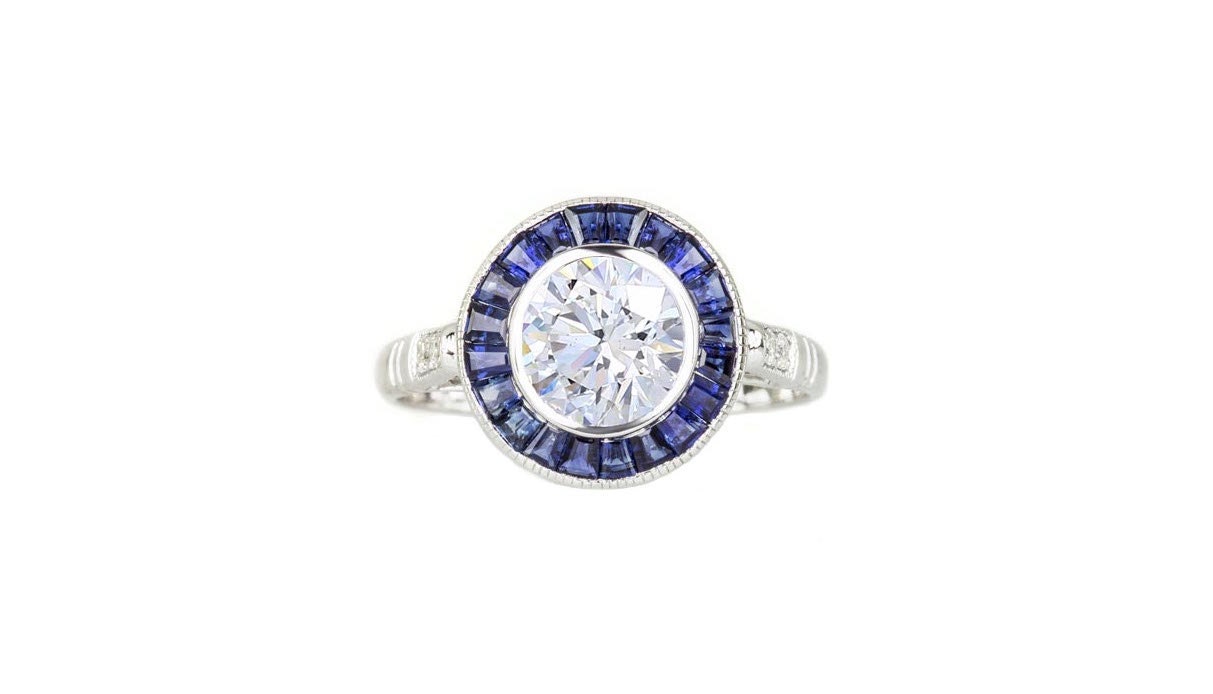No matter where you’re shopping, it’s important to understand how diamonds are valued so that you do not overpay.
Diamond are the rare result of carbon exposed to tremendous heat and pressure at depths of 140 to 190 kilometers (87 to 118 mi) within the earth’s mantle. A natural diamond’s formation occurs over a period of time between 1 and 3.3 billion years.
Diamond are inherently rare and have been highly regarded as a symbol of love and beauty since the first century AD. Mining for diamonds is difficult and complex; on average, one metric ton of ore mined yields only 0.30 carats of diamond.
A diamond is a unique miracle of time, place and change. And each has specific qualities that establish its value.
No two diamonds are exactly the same. Each is unique and dances with light differently depending on its composition and history. Natural diamonds are inherently rare, some more so than others and come in many sizes, shapes and colors.
You don’t have to put yourself in a high-pressure sales situation. You can use your knowledge of the Four C’s to select a diamond with qualities that meet your needs and budget from anywhere in the world.
Industry professionals and consumers alike consider four principal factors to determine diamond value: Carat, Color, Clarity and Cut. These factors are commonly reffered to as “The Four C’s”.
CARAT:
A Carat is simply a unit of weight for precious stones and pearls. One Carat is equivelent to 1/5th of a gram. In strict compliance with Gemoligical Institute of America’s (GIA) standards diamonds are weighed to the thousandth (.001) of a carat and then rounded to the nearest hundredth (.01). The stone will only be rounded up to the nearest hundredth if the thousandth digit is a 9. International GIA standards surpass those of the FDA ensuring our dedication to precision and transparency.
COLOR:
Diamond color actually means lack of color. Distinctions in diamond color are subtle and often invisible to the untrained eye. The diamond color scale begins at D (colorless) and ends at Z (light yellow). The presence of noticeable color in a diamond may reduce its ability to reflect light, therefore the most valuable diamonds have little to no detectable color.
CLARITY:
The diamond formation process often results in a variety of internal characteristics (inclusions) and external characteristics (blemishes). A diamond's clarity grade is determined by the absence of these characteristics. A diamond's unique characteristics (sometimes called birthmarks) effect its appearance and determine its clarity grade. Diamonds are assigned a clarity grade that ranges from flawless (FL) to diamonds with obvious inclusions (I3).
CUT:
A diamond’s cut unleashes its light. The GIA diamond cut scale for standard round brilliant diamonds in the D-to-Z diamond color range contains 5 grades ranging from Excellent to Poor. In strict compliance with GIA standards a diamond cut grade takes into account the design and craftsmanship of the diamond, including its weight relative to its diameter, its girdle thickness (which affects its durability), the symmetry of its facet arrangement, and the quality of polish on those facets.
Use your knowledge of diamonds and The Four C’s to objectively understand the value of any diamond and shop with confidence!


